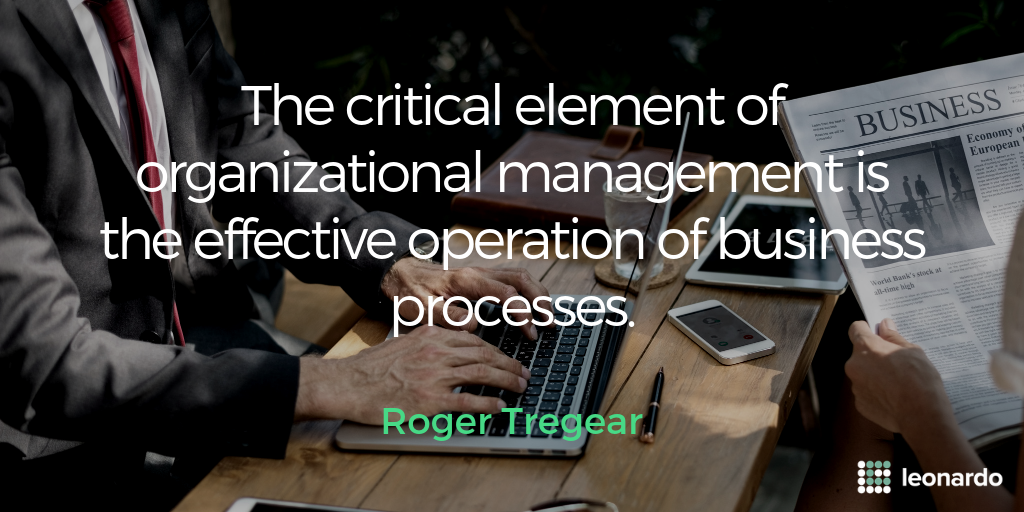 As we start this new year I want to revisit the basic premise of my involvement in business process management and improvement — to explain it to you, to reassess it for myself, and to seek your feedback.
As we start this new year I want to revisit the basic premise of my involvement in business process management and improvement — to explain it to you, to reassess it for myself, and to seek your feedback.
My working life revolves around the certainty that organizations need to be fully committed to both continuous process management and continuous process improvement.
Why is this so? In brief, it's the principle of the primacy of process. Let's unpack that and see if I can convince you of its pre-eminence — and, yes, I appreciate that, as this paper is originally published in the Business Rules Journal, that may not be easy!
Do you want a simple, but effective, practical, but well-grounded, explanation of the role of business processes in management?
After many years working on this question in organizations of many sizes and types, in different national and organizational cultures, I believe I can help you with a simple, effective, practical, and well-grounded meta-model of management.
Cross-functional Value
The idea of cross-functional value (i.e., products and services) creation, accumulation, and delivery is fundamental. Value is produced through collaboration.
A business process is a collection of activities that transforms one or more inputs into one or more outputs. Many resources are involved in the management and execution of a process — materials, people, systems, infrastructure, information, technology, facilities, policies, rules, regulations — and these must also be seen to be integral to the process.
Business processes are the only way any organization can deliver value to customers and other external stakeholders. By themselves, separate functional areas of an organization — think of boxes on the organization chart — cannot deliver value to external parties.
The further conclusion we must draw from this is that every organization executes its strategic intent via its business processes.
Does that start to sound primal to you?
The Direction of Effort
If so much important activity is happening across the organization, how does that relate to the way we manage organizations? There are two important perspectives, and one of them is too often neglected.
Clearly, most of the effort and activity of traditional management is 'vertical' in nature, i.e., it reflects the authorities shown in the organization chart — we manage down, and sometimes up.

This is important and necessary. The organization chart has a practical purpose. We all want to know where the authorities and delegations lie, and how decisions get made. Organizations will continue to create groups of people, of like skills or shared purpose, to get work done as well as possible.
In which direction does the work get done? Mainly across the organization.

The way in which we create, accumulate, and deliver value is essentially 'horizontal' in nature. People and their teams collaborate to deliver products and services. Each activity, from defining a need to delivering a solution, is done by a specialist group, but all with the same intent. Individually their work is meaningless, unless collectively they deliver a valued product or service to a customer or other stakeholder.
So, we have well-developed vertical management methods, but the important work is happening across the organization. Does that seem like a primal disconnect?
The Primacy of Process
If the reality that business processes are the only value pathways, and the way organizational strategy is operationalized, is accepted (as it must be), where does that lead?
The inescapable conclusion is that the starting point for effective organizational management is to understand, manage, and optimize those business processes. Without a proactive focus on business processes, organizational performance cannot be optimized, and strategy cannot be effectively executed.
If value is created, accumulated, and delivered across the organization, are those value pathways defined and documented? Are those pathways understood? Do all staff understand their roles along those pathways?
If value is created, accumulated, and delivered across the organization, what measurements of performance are made in that direction? What is the measured performance of cross-functional processes, and is there a documented target performance level? What are the performance gaps, and how should their resolution be prioritized?
If value is created, accumulated, and delivered across the organization, who is in charge of that? The organization chart is silent on such cross-functional matters. While it is true that the CEO is responsible for everything, she already knew that, and it doesn't help. Can it be a good idea that the cross-functional path through which value is exchanged with customers is not proactively managed?
Organizations must reimagine their operations as value creation and delivery flows. The management philosophy that facilitates that is process-based management.
Convinced?
Have I made my case for the primacy of process? Are you convinced that the critical element of organizational management is the effective operation of business processes?
Of course, there are many other elements — IT systems, people, applications, services, rules, infrastructure, decisions, information, facilities, policies, regulations — but these all find their purpose in contributing to the management or execution of business processes.
Do you agree that the key artifact of management is the business process?




